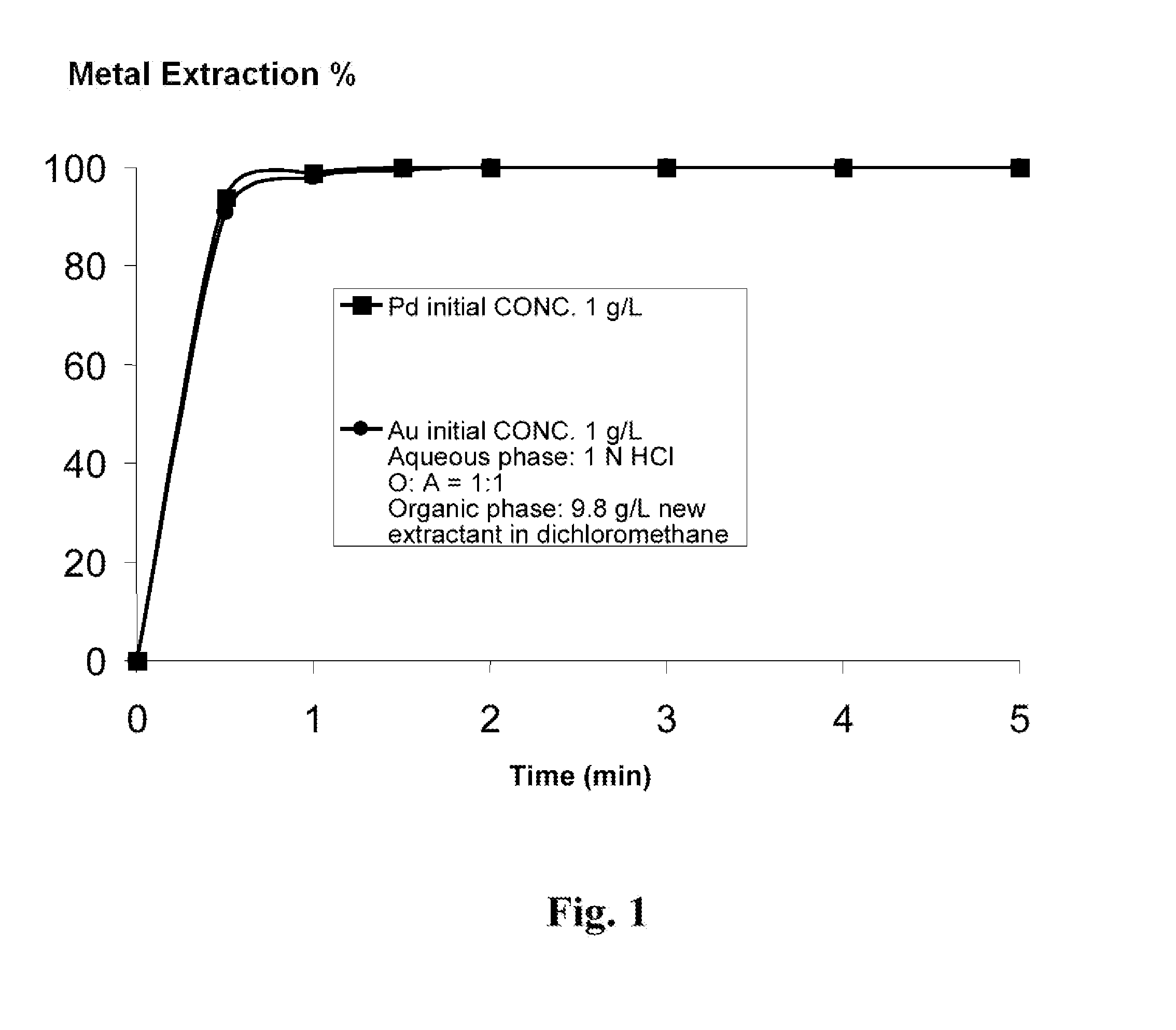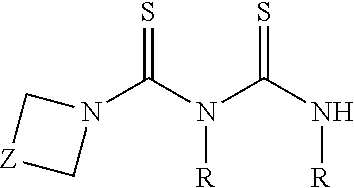Method and Technique Employing a Novel Extractant to Enhance Recovery of Gold and Palladium from Hydrochloric Acid Media
a technology of hydrochloric acid and extractant, which is applied in the direction of silve compounds, silver compounds, photochemical processes, etc., can solve the problems of inability to keep up with the logarithmic increase in inability to enhance the recovery of gold and palladium from hydrochloric acid media, and inability to meet the demand of minerals extracted by mining, etc., to achieve the effect of further enhancing the process
- Summary
- Abstract
- Description
- Claims
- Application Information
AI Technical Summary
Benefits of technology
Problems solved by technology
Method used
Image
Examples
example 1
[0045]Typical procedure for preparation of the preferred novel extractant: The 0.55 kg of CS2 was added in small portions over a period of about 1 hour to a mixture of 0.48 kg morpholine amine and 1 kg dicyclohexyl carbodiimide (DCC) in 6 L of methanol at 10° C. or less. The reaction mixture was stirred for 4 hours. When the reaction was completed, the precipitated solid was removed by filtration and washed with water two times. This product is easily recrystallized from methanol. This reaction can be carried out in water or solvent free conditions too.
example 2
[0046]1 L organic solution containing of 4.5 g new extractant in dichloromethane, was contacted vigorously with an equal volume of 0.5 M hydrochloric acid solution containing 2000 ppm gold in form of gold chloride (AuCl4-). After a contact time of 90 sec the phases were allowed to separate. After extraction, the aqueous phase is analyzed by AAS (Atomic Absorbance Spectroscopy). Based on AAS data, the remained gold in aqueous phase was about 0.6 ppm.
example 3
[0047]1 L of organic solution containing 15.3 g new extractant in dichloromethane, was contacted vigorously with an equal volume of 0.5 M of hydrochloric acid solution contain 2000 ppm palladium in form of palladium chloride (PdCl4-2). After a contact time of 90 sec the phases were allowed to separate. After extraction, the aqueous phase is analyzed by AAS (Atomic Absorbance Spectroscopy). Analysis of the aqueous phase showed that the remained palladium in aqueous phase was about 0.1 ppm.
PUM
| Property | Measurement | Unit |
|---|---|---|
| contact time | aaaaa | aaaaa |
| temperature | aaaaa | aaaaa |
| structure | aaaaa | aaaaa |
Abstract
Description
Claims
Application Information
 Login to View More
Login to View More - R&D
- Intellectual Property
- Life Sciences
- Materials
- Tech Scout
- Unparalleled Data Quality
- Higher Quality Content
- 60% Fewer Hallucinations
Browse by: Latest US Patents, China's latest patents, Technical Efficacy Thesaurus, Application Domain, Technology Topic, Popular Technical Reports.
© 2025 PatSnap. All rights reserved.Legal|Privacy policy|Modern Slavery Act Transparency Statement|Sitemap|About US| Contact US: help@patsnap.com



